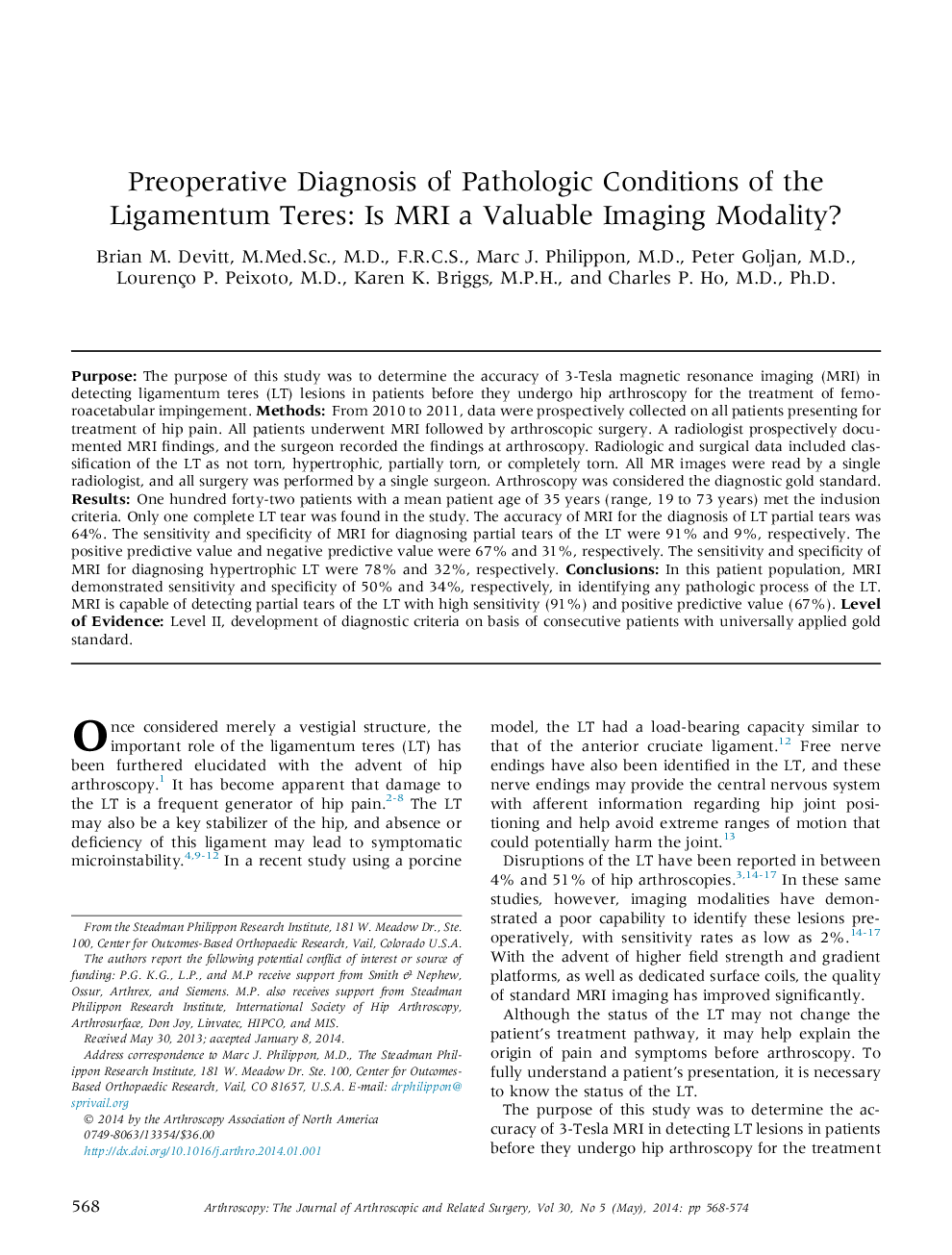| Article ID | Journal | Published Year | Pages | File Type |
|---|---|---|---|---|
| 4043110 | Arthroscopy: The Journal of Arthroscopic & Related Surgery | 2014 | 7 Pages |
PurposeThe purpose of this study was to determine the accuracy of 3-Tesla magnetic resonance imaging (MRI) in detecting ligamentum teres (LT) lesions in patients before they undergo hip arthroscopy for the treatment of femoroacetabular impingement.MethodsFrom 2010 to 2011, data were prospectively collected on all patients presenting for treatment of hip pain. All patients underwent MRI followed by arthroscopic surgery. A radiologist prospectively documented MRI findings, and the surgeon recorded the findings at arthroscopy. Radiologic and surgical data included classification of the LT as not torn, hypertrophic, partially torn, or completely torn. All MR images were read by a single radiologist, and all surgery was performed by a single surgeon. Arthroscopy was considered the diagnostic gold standard.ResultsOne hundred forty-two patients with a mean patient age of 35 years (range, 19 to 73 years) met the inclusion criteria. Only one complete LT tear was found in the study. The accuracy of MRI for the diagnosis of LT partial tears was 64%. The sensitivity and specificity of MRI for diagnosing partial tears of the LT were 91% and 9%, respectively. The positive predictive value and negative predictive value were 67% and 31%, respectively. The sensitivity and specificity of MRI for diagnosing hypertrophic LT were 78% and 32%, respectively.ConclusionsIn this patient population, MRI demonstrated sensitivity and specificity of 50% and 34%, respectively, in identifying any pathologic process of the LT. MRI is capable of detecting partial tears of the LT with high sensitivity (91%) and positive predictive value (67%).Level of EvidenceLevel II, development of diagnostic criteria on basis of consecutive patients with universally applied gold standard.
